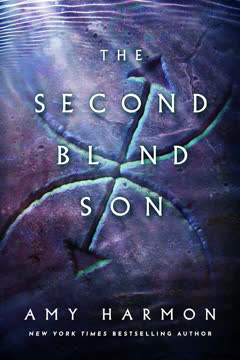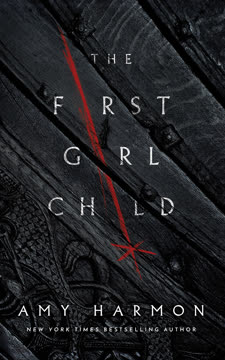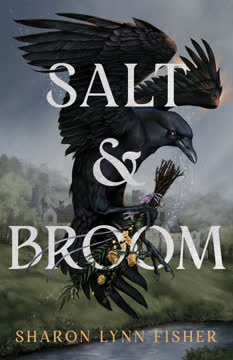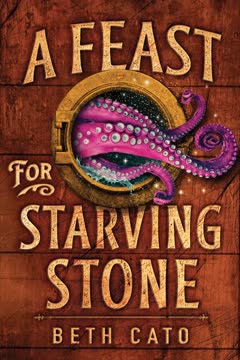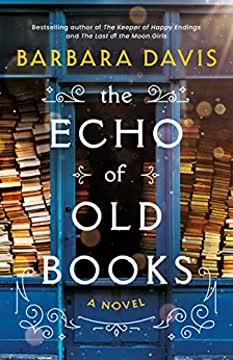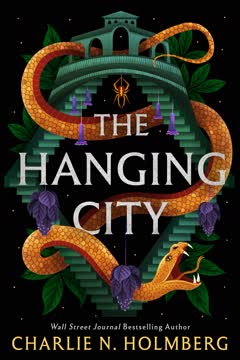Plot Summary
A Mother's Desperate Climb
In the land of Saylok, a mother, sick and desperate, climbs Temple Hill with her blind son, Baldr, seeking a miracle from the Highest Keeper. The annual Tournament of the King fills the mount with color and celebration, but she is not there for festivity. She waits for hours, her strength waning, until a compassionate keeper, Dagmar, helps her gain an audience with Master Ivo. The Highest Keeper cannot cure the boy's blindness but senses something extraordinary in him. He blesses the child, deepening the runes on his palms, enhancing his other senses. The mother's hope is restored, but she must leave her son in the care of others, setting in motion a fate that will echo through Saylok's future.
Washed Ashore, Blind Encounter
Ghisla, a young girl from the Northlands, survives a shipwreck and washes up on Saylok's stormy shore. She is found by Hod, a blind boy living in isolation under the tutelage of Arwin, a cave keeper. Their first meeting is awkward and wary, but necessity forges a bond. Ghisla, frail and traumatized by loss, is cared for by Hod, who navigates the world through heightened senses. Their days are filled with tentative trust, shared stories, and the slow healing of wounds. In the darkness of the cave, Ghisla's songs become a lifeline, painting colors and memories for Hod, who has never seen the world but now begins to "see" through her music.
Songs in the Darkness
As Ghisla recovers, she and Hod share their pasts—her family lost to plague, his blindness and abandonment. Ghisla's songs, rooted in the traditions of the Songrs, become a source of wonder for Hod, who experiences visions and emotions through her voice. Their connection deepens, transcending their isolation. Hod's gentle care and Ghisla's resilience create a fragile sanctuary. Yet, the outside world intrudes: Arwin returns, suspicious and fearful of Ghisla's influence on his pupil. The cave, once a haven, becomes a place of tension as Arwin's mistrust threatens to tear the newfound friendship apart.
Runes and Revelations
Arwin's fear of Ghisla's power and the runes she inspires in Hod leads to a painful decision. Ghisla cannot stay; she is too dangerous, too precious, and too disruptive. Arwin arranges for her to be sent to the chieftain of Leok, where she will be given a new name and identity. Before parting, Hod carves a soul rune into Ghisla's palm, binding them in a secret, magical connection. Their farewell is filled with longing and unspoken promises. Ghisla is thrust into a new world, her past erased, her future uncertain, but the soul rune remains—a hidden thread tying her to the blind boy she has come to love.
Exile and New Names
Ghisla, now called Liis of Leok, is presented to Chief Lothgar as a daughter of the clan, though her origins are a lie. The chieftain, desperate for a girl to send to the temple, accepts her without question. Ghisla is cleaned, clothed, and prepared for her new role. She is sent with other girls from the clans to the temple on Temple Hill, where they are to be raised as symbols of hope in a land cursed with a drought of daughters. The girls, each with their own secrets and sorrows, form a reluctant sisterhood under the watchful eyes of the keepers, their fates entwined by the needs of a dying kingdom.
Daughters Gathered, Cursed Land
The daughters—Ghisla, Elayne, Juliah, Bashti, and Dalys—are installed in the temple, their presence a beacon for Saylok's desperate people. The keepers, led by Master Ivo and Dagmar, struggle to care for the girls, unaccustomed to female company. The temple becomes both sanctuary and prison, its routines strict and its secrets many. Ghisla's soul rune allows her to reach out to Hod in secret, their connection a lifeline across distance and despair. Yet, the curse on Saylok persists, and the girls' existence is fraught with uncertainty, their value both a blessing and a burden.
The Temple's Silent Bonds
Life in the temple is marked by discipline, study, and the slow growth of trust among the daughters. Ghisla's gift—her ability to hear thoughts while singing and touching others—emerges, deepening her isolation. She learns the keepers' fears, the girls' hidden pains, and the temple's many secrets. The soul rune's magic allows her and Hod to share songs and visions, sustaining their love in silence. Yet, the outside world grows more dangerous: the king's interest in Ghisla's voice intensifies, and the threat of violence and exploitation looms. The daughters cling to each other, their bonds forged in adversity.
The King's Demands
King Banruud, tormented by headaches and haunted by his own sins, demands Ghisla's presence to soothe him with her songs. Her voice becomes both weapon and shield, granting her a precarious influence. The king's obsession grows, and Ghisla must navigate his desires and the dangers they bring. The soul rune's power is tested as Ghisla and Hod's connection is strained by distance and fear. The keepers, powerless to protect the daughters, watch as the king's grip tightens. Ghisla's gift becomes a curse, her safety dependent on her ability to placate a man who sees her as both salvation and possession.
The Soul Rune's Promise
Despite the dangers, Ghisla and Hod's soul rune endures, allowing them to share thoughts, songs, and visions. Their love deepens, sustained by hope and memory. Ghisla's ability to "see" through the rune becomes a source of strength, but also of pain, as she witnesses Hod's struggles and the growing darkness in Saylok. The rune is both a promise and a prison, binding them together even as the world conspires to keep them apart. Their secret connection is a fragile thread of light in a land shadowed by curses and ambition.
Separation and Secret Longing
Time passes. Ghisla grows into womanhood in the temple, her voice renowned, her heart aching for Hod. The soul rune fades, severed by violence and the king's cruelty, leaving her isolated and longing. Hod, exiled and adrift, survives among the Northmen, his only solace the memory of Ghisla's songs. Both are shaped by loss and longing, their love a secret wound. When Hod returns to Saylok as a servant of the North King, their reunion is fraught with danger, desire, and the weight of years apart. The world has changed, but their hearts remain bound by the promise of the soul rune.
The Return of the Blind Archer
Hod's return to Saylok coincides with political upheaval. The North King, Gudrun, arrives with an army, seeking alliance through marriage to Princess Alba. Ghisla and Hod's reunion is secret and bittersweet, their love rekindled in stolen moments. The king's court is a nest of intrigue: alliances shift, secrets unravel, and the threat of war looms. Hod's skills as an archer and his reputation as a blind warrior make him both asset and outcast. Ghisla, caught between duty and desire, must navigate the treacherous currents of power, her love for Hod both a risk and a refuge.
Feasts, Fears, and Northmen
At a tense feast in Berne, Gudrun demands Ghisla as the price for peace, revealing her true heritage as a Songr. Banruud refuses, but the North King's ambitions are clear. Hod is paraded as a curiosity, his skills tested before the assembled clans and Northmen. Ghisla's identity is exposed, her safety precarious. The feast becomes a battleground of words and wills, with Alba's fate as the king's bargaining chip. The daughters, now women, sense the coming storm. Ghisla and Hod's love is a secret rebellion against the machinations of kings and conquerors.
The King's Bargain
Banruud, desperate to save his throne, agrees to marry Alba to Gudrun, hoping to buy peace with the Northmen. The chieftains are divided, the clans restless. Ghisla and Hod, reunited but still in danger, plot escape and survival. Ghost, revealed as Alba's true mother, faces her own reckoning. The keepers, powerless and aging, watch as the world they guarded crumbles. The soul rune's promise is tested as Ghisla and Hod risk everything for love and freedom. The fate of Saylok hangs on the choices of a few, and the storm breaks over the mount.
Lovers in the Shadows
In the shadow of impending war, Ghisla and Hod steal moments together, their love a defiant act against fate. They share a night of passion and truth, binding themselves in body and soul. Yet, the world outside their room is unraveling: Alba refuses to flee, determined to sacrifice herself for Saylok. The keepers debate flight or resistance. The Northmen gather, the king's grip weakens, and the temple's sanctuary collapses. Ghisla and Hod's love, once a secret, becomes a beacon of hope and rebellion as the final battle approaches.
The Collapse of Sanctuary
The Northmen attack, the temple is destroyed, and the keepers are slain. The daughters and women flee into the woods, their sanctuary lost. Bayr, revealed as Banruud's son and rightful king, fights to save Saylok. Ghost's secret is exposed, and the truth of Alba's parentage shakes the kingdom. Ghisla, blinded by the rune, gives Hod her sight in the battle, allowing him to fight with supernatural skill. The old order falls in blood and ruin, and the survivors must choose between vengeance and mercy, hope and despair.
The Battle for Saylok
The battle for Saylok is brutal and costly. Bayr, aided by Hod and the last loyal warriors, defeats the Northmen. The king's cowardice is exposed, and the people turn against him. Ghost, claiming her place as Highest Keeper, confronts Banruud. The daughters, now keepers themselves, declare the king's reign over. In a final confrontation, Banruud is slain, not by prophecy or fate, but by the hands of those he wronged. The curse is broken not by death, but by truth, sacrifice, and the rise of a new order.
The Fall of the King
With Banruud's death, the clans sever their braids, ending their allegiance to the old king. Bayr is crowned, not as a conqueror, but as a healer and unifier. Hod, revealed as his brother, is honored for his courage and loyalty. Ghisla, her true name and heritage restored, is finally free to love openly. The survivors mourn their dead, honor their sacrifices, and begin the work of rebuilding. The temple is gone, but a new sanctuary is born in the hearts of those who remain. The soul rune's promise is fulfilled in love, hope, and the dawn of a new era.
A New Dawn, New Keepers
In the aftermath, Saylok is transformed. The daughters become keepers, guiding the kingdom with wisdom and compassion. Ghost, as Highest Keeper, leads with humility and strength. Bayr and Alba rule together, their love a symbol of unity. Hod and Ghisla, finally together, find joy in each other and in the promise of new life. The curse is lifted, not by magic, but by the courage to face truth and the willingness to forgive. Saylok's future is uncertain, but hope endures, carried in the songs of its people and the hearts of its new keepers.
Characters
Hod
Hod, born blind and abandoned by his mother, is raised by the cave keeper Arwin. His blindness is compensated by extraordinary senses, and he becomes adept at navigating the world through sound, scent, and touch. Deeply introspective, Hod is marked by loneliness and a yearning for connection. Ghisla's arrival transforms his world, her songs giving him visions and hope. The soul rune he carves with her binds them across years and distance. Hod's journey is one of survival, self-discovery, and sacrifice. He is both a weapon and a healer, feared and misunderstood, but ultimately defined by his unwavering love for Ghisla and his loyalty to his brother Bayr. His arc is one of transformation from outcast to hero, from tool of prophecy to agent of his own fate.
Ghisla (Liis of Leok)
Ghisla, orphaned by plague and violence, is a Songr—a singer whose music holds power. Shipwrecked and alone, she finds solace and purpose in her bond with Hod. Forced to assume a new identity as Liis of Leok, she becomes a symbol of hope in a cursed land. Ghisla's gift allows her to hear thoughts and share visions, but it also isolates her. Her love for Hod is both her strength and her vulnerability. She endures exploitation, loss, and the burden of secrets, yet remains resilient and compassionate. Ghisla's journey is one of reclaiming agency, forging sisterhood, and transforming pain into power. Her arc is a testament to the endurance of hope and the redemptive force of love.
Bayr
Bayr, known as the Temple Boy, is the son of Desdemona and Banruud, raised by the keepers. Gifted with immense strength and a stutter that marks his vulnerability, Bayr is both feared and beloved. His loyalty to Alba and the daughters is unwavering, and his sense of justice drives him to challenge tyranny. Bayr's discovery of his true parentage is a crucible, forcing him to confront betrayal and claim his destiny. As king, he embodies the hope of Saylok, uniting the clans and ending the curse. His relationship with Hod, his brother, is one of mutual respect and deep affection, a bond that heals old wounds and forges a new future.
King Banruud
Banruud, once chieftain of Berne, becomes king through deceit and violence. Haunted by guilt, plagued by headaches, and obsessed with control, he is both a victim and perpetrator of Saylok's curse. His relationship with his children—Bayr, Alba, and Hod—is marked by denial, fear, and ultimately destruction. Banruud's reign is defined by paranoia, cruelty, and the desperate pursuit of legacy. His downfall is inevitable, brought about by the very people he sought to dominate. In death, he is both pitied and condemned, a cautionary figure whose choices shape the fate of the kingdom.
Master Ivo
Master Ivo is the ancient, enigmatic leader of the keepers. He is both wise and weary, carrying the weight of Saylok's history and the burden of prophecy. Ivo's decisions are shaped by fear of misuse of the runes and the desire to protect the kingdom, but his caution often leads to inaction and regret. He recognizes the extraordinary in Hod and Ghisla but is paralyzed by the threat they represent. Ivo's death marks the end of the old order and the beginning of a new era, his legacy one of both failure and hope.
Dagmar
Dagmar, uncle to Bayr and a keeper of Dolphys, is a figure of empathy and quiet strength. He raises Bayr with love and discipline, serving as both mentor and protector. Dagmar is burdened by secrets—Desdemona's curse, Bayr's parentage, and his own forbidden love for Ghost. His actions are motivated by loyalty and a desire to atone for past failures. Dagmar's ultimate sacrifice in the temple's collapse is an act of redemption, ensuring the survival of those he loves.
Ghost
Ghost, once a slave, is revealed as Alba's true mother. Marked by her pale hair and skin, she lives on the margins, both seen and unseen. Her love for Alba is fierce and sacrificial, guiding her choices and giving her strength. Ghost's journey is one of reclaiming agency, confronting the king, and stepping into leadership as the new Highest Keeper. Her arc is a testament to the power of maternal love and the courage to claim one's place in the world.
Princess Alba
Alba, the only daughter born in a generation, is raised as the hope of Saylok. Her beauty and grace make her a symbol, but her life is shaped by secrets and sacrifice. Her love for Bayr is pure but forbidden, and her sense of duty compels her to accept a fate she does not choose. Alba's arc is one of awakening, as she learns the truth of her parentage and claims her own destiny. Her resilience and compassion inspire those around her, making her a true queen in spirit.
Arwin
Arwin, the cave keeper who raises Hod, is a complex blend of wisdom, fear, and eccentricity. He is both protector and gatekeeper, shaping Hod's abilities and worldview. Arwin's paranoia and adherence to tradition lead to painful choices, but his love for Hod is genuine. His decline into madness and eventual death mark the passing of an era, his legacy living on in the man Hod becomes.
Gudrun, the North King
Gudrun, king of the Northmen, is a force of chaos and ambition. He seeks to claim Saylok through marriage and war, using Hod as both tool and pawn. His presence accelerates the kingdom's collapse, forcing old secrets into the light and compelling the characters to choose sides. Gudrun's cunning and ruthlessness make him a formidable adversary, but his defeat is necessary for Saylok's rebirth.
Plot Devices
The Soul Rune
The soul rune, carved into Ghisla and Hod's palms, is the central magical device of the novel. It allows them to share thoughts, songs, and visions, sustaining their love across years and separation. The rune's power is both blessing and curse, granting connection but also exposing them to danger and loss. Its use is forbidden, symbolizing the risks of forbidden love and the costs of breaking tradition. The soul rune's magic is intimately tied to the themes of sacrifice, hope, and the enduring power of love.
Prophecy and Curses
The narrative is structured around prophecy and the curse on Saylok—a land without daughters, a king haunted by his sins, and the belief that only sacrifice can break the cycle. Foreshadowing is woven through the stories of the gods, the runes, and the characters' dreams. The tension between fate and free will drives the plot, as characters struggle to fulfill or escape their destinies. The curse is ultimately broken not by violence, but by truth, love, and the willingness to face the past.
Duality and Mirrors
The motif of duality—blindness and sight, strength and weakness, love and loss—pervades the novel. Hod and Bayr, Ghisla and Alba, Banruud and Ghost: each pair reflects the other, their fates intertwined. The runes themselves are mirrored, their meanings shifting with perspective. The narrative structure echoes this, with parallel arcs and mirrored events. The story's resolution depends on the characters' ability to see beyond surface differences and embrace the wholeness of their shared humanity.
The Collapse of Sanctuary
The fall of the temple is both literal and symbolic—the end of an era, the shattering of old certainties, and the birth of a new order. The collapse is foreshadowed by the growing unrest, the failures of leadership, and the secrets that can no longer be contained. The destruction forces the survivors to confront their fears, claim their truths, and build a new sanctuary from the ashes. The motif of sanctuary—cave, temple, song—evolves, reflecting the characters' growth and the kingdom's transformation.
Analysis
Amy Harmon's The Second Blind Son is a sweeping tale of love, loss, and the struggle for identity in a world shaped by prophecy and power. At its heart, the novel is a meditation on the ways we are marked—by fate, by family, by the choices we make and those made for us. Through the intertwined journeys of Hod and Ghisla, the story explores the redemptive power of connection: how love can bridge even the deepest divides of blindness, exile, and silence. The soul rune, as both magical device and metaphor, encapsulates the novel's central lesson: that true strength lies not in domination or prophecy, but in vulnerability, empathy, and the courage to hope. The collapse of the temple and the rise of new keepers signal a rejection of old hierarchies and the embrace of a more inclusive, compassionate order. Ultimately, the book argues that curses are broken not by violence or sacrifice alone, but by the willingness to face truth, forgive, and build anew. In a world where suffering and injustice seem inescapable, The Second Blind Son offers a vision of healing rooted in love, song, and the enduring promise of new beginnings.
Last updated:
Review Summary
The Second Blind Son received mostly positive reviews, with readers praising its intricate world-building, compelling characters, and romantic elements. Many appreciated the Norse mythology-inspired setting and the slow-burn romance between Hod and Ghisla. Some felt the parallel timeline with the first book was repetitive, while others enjoyed the new perspective. Reviewers noted the author's lyrical writing style and ability to evoke strong emotions. Overall, fans of fantasy romance found it a satisfying addition to the Chronicles of Saylok series.
